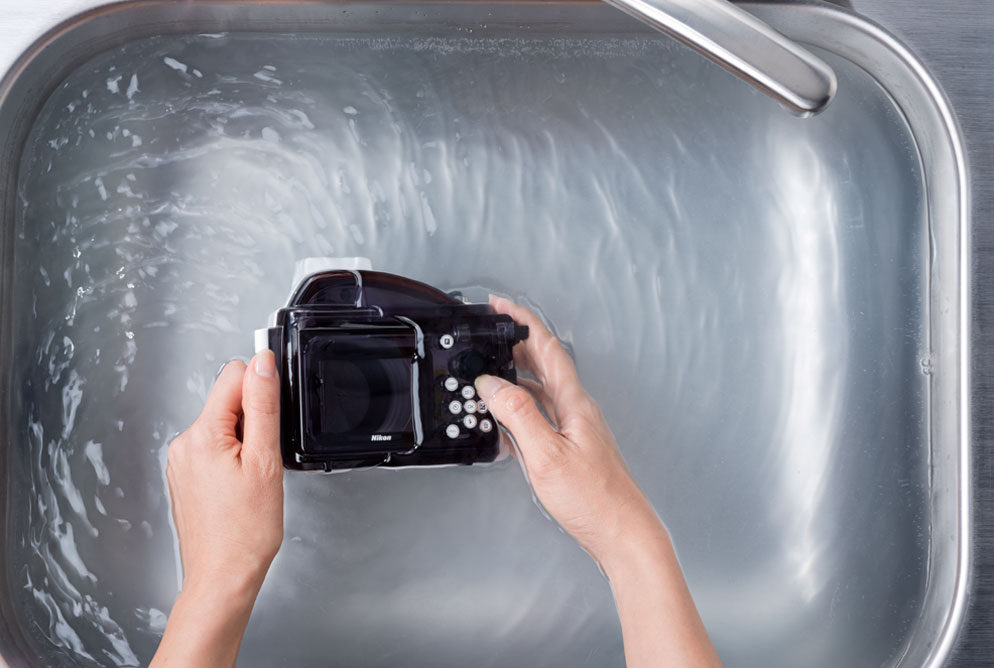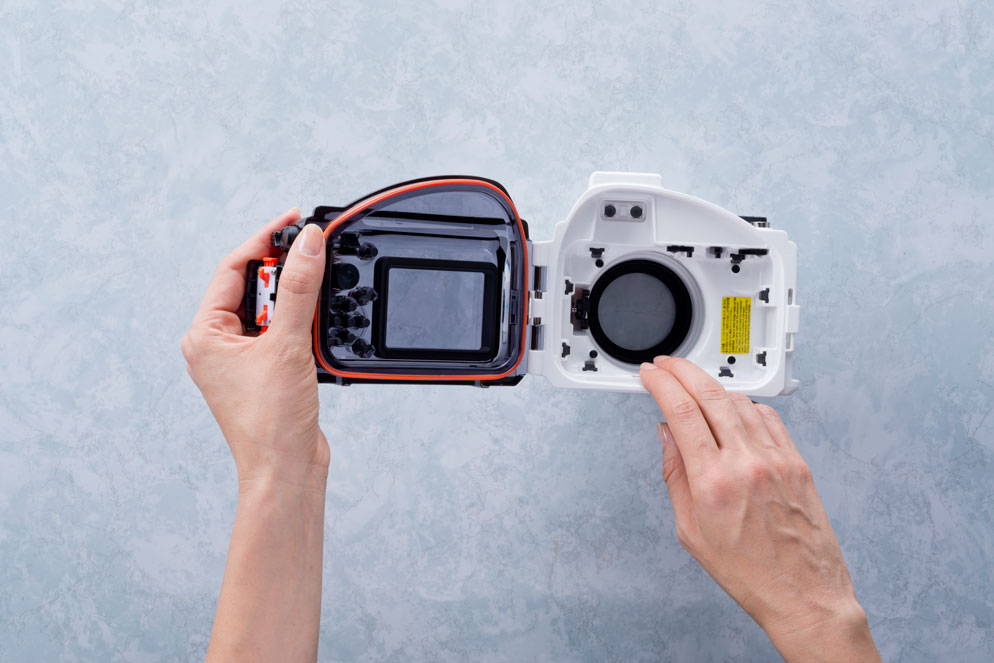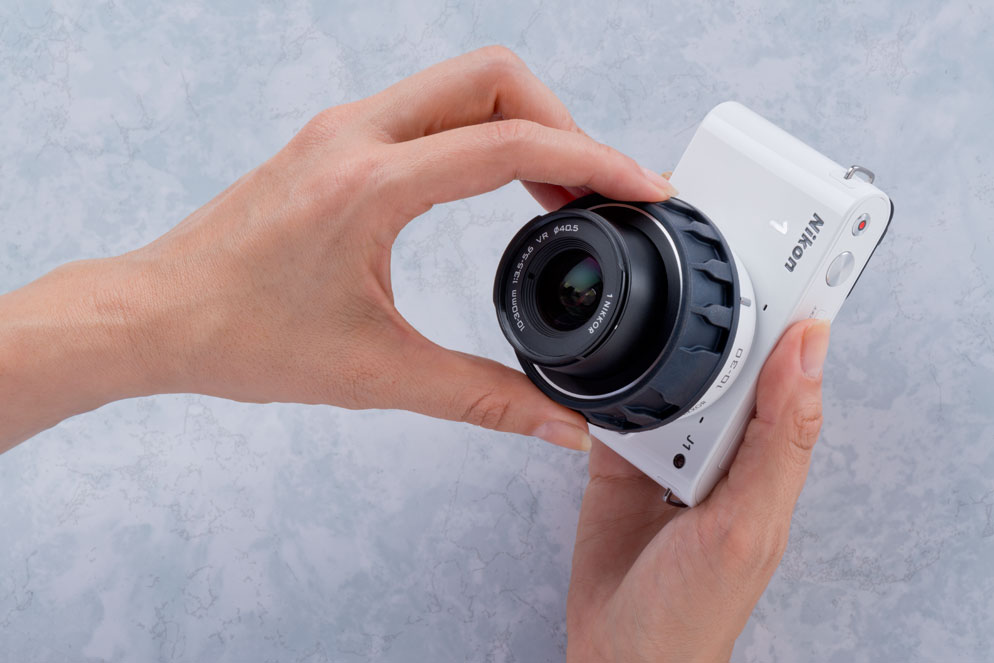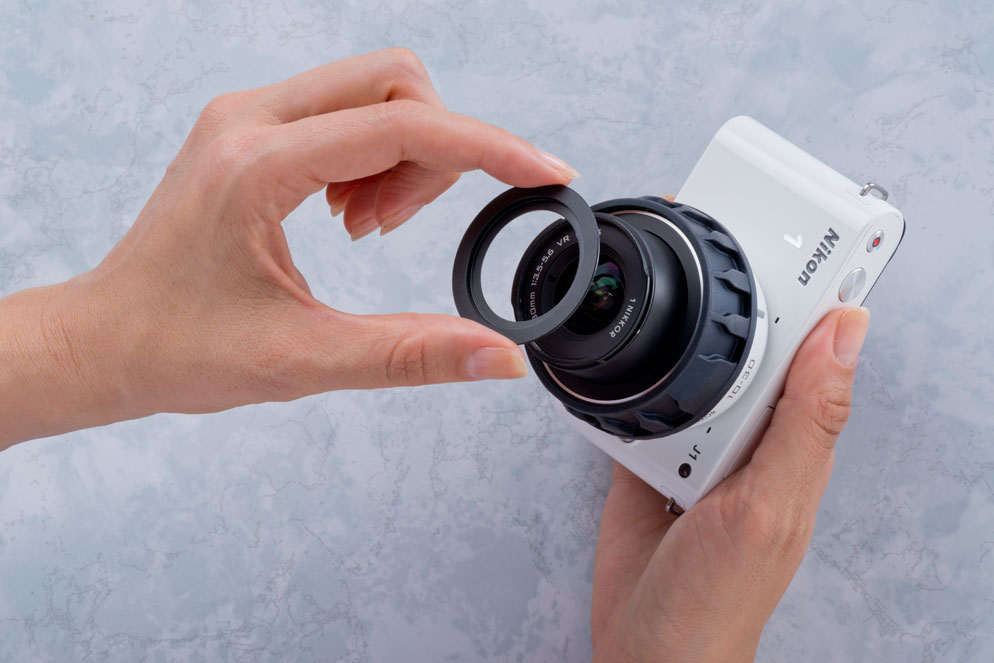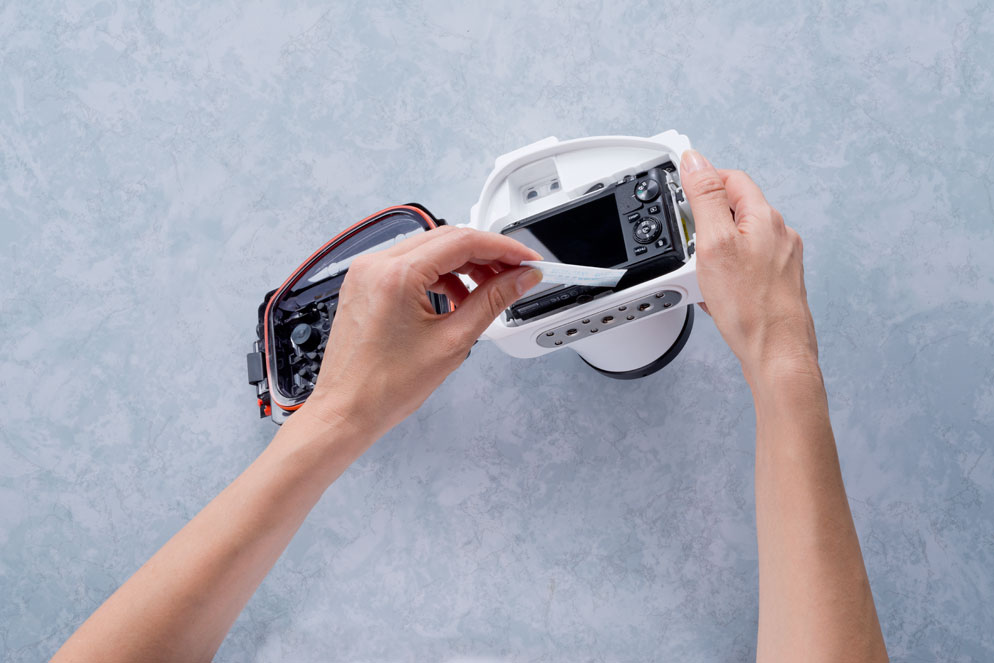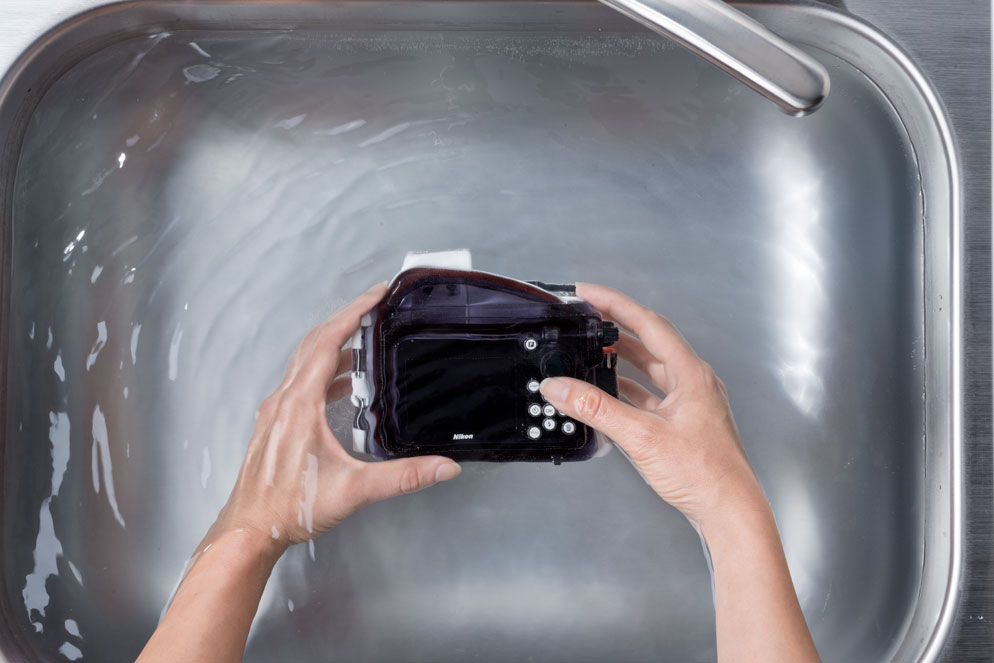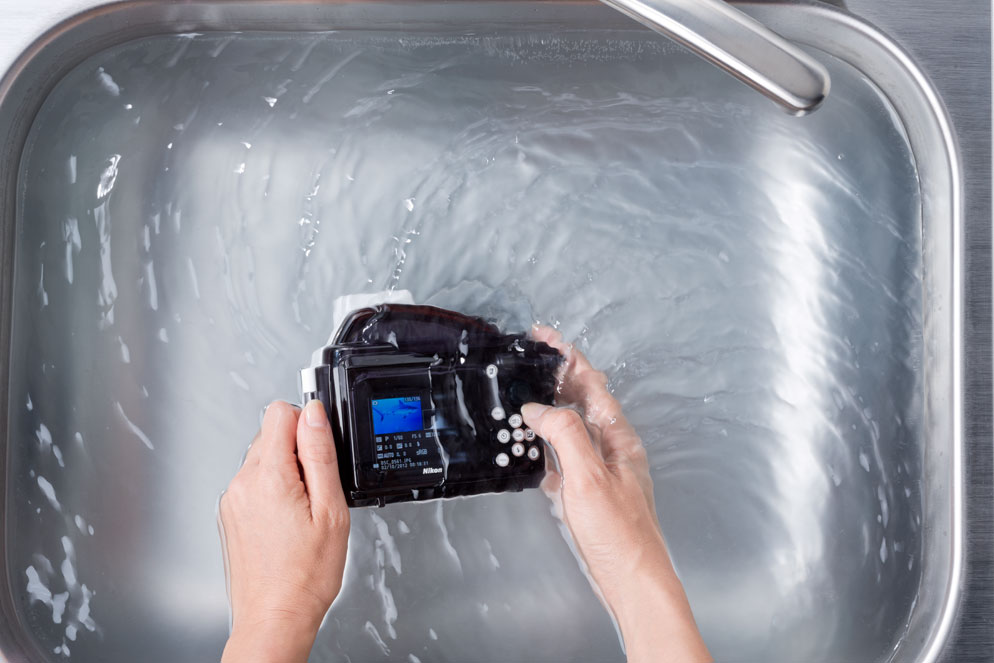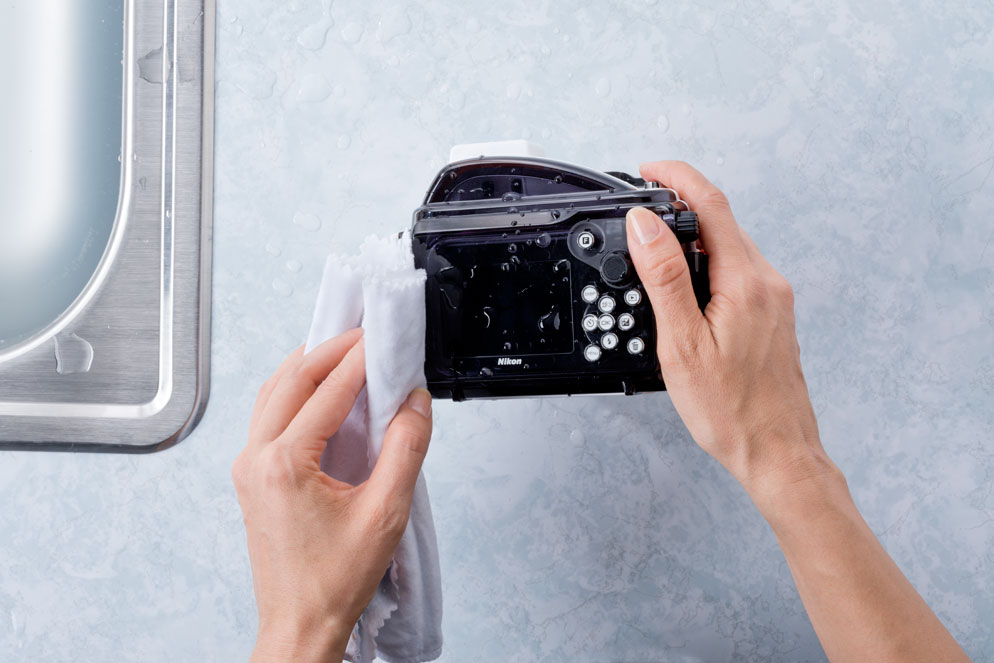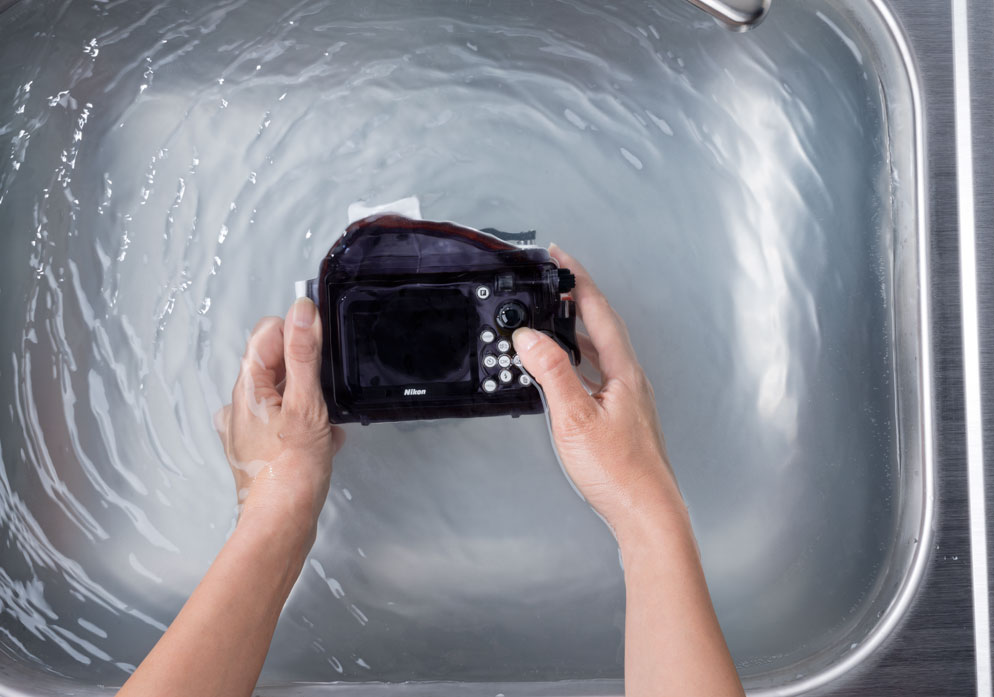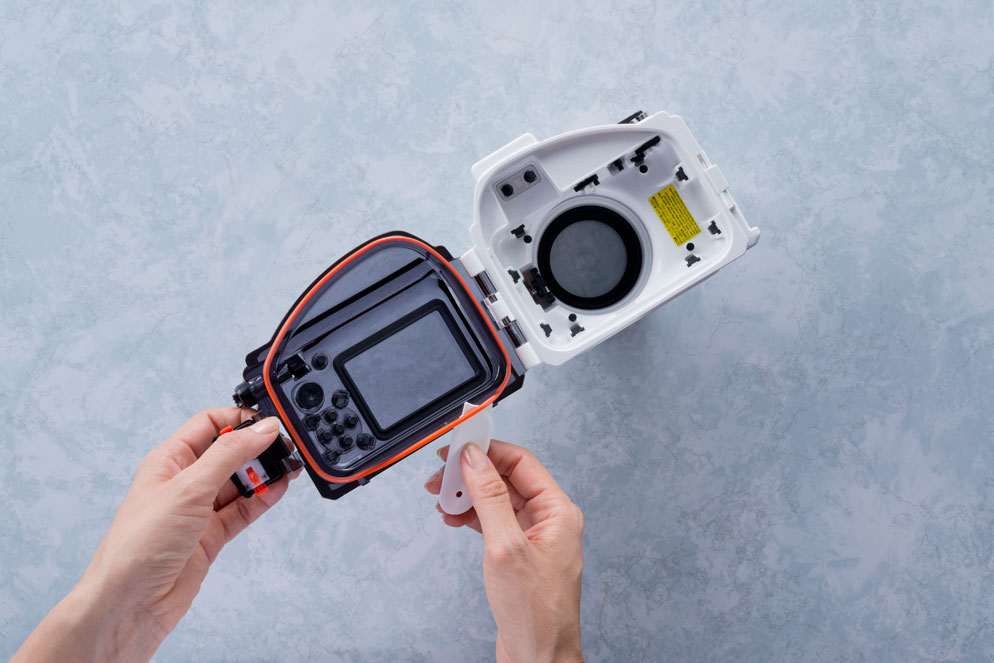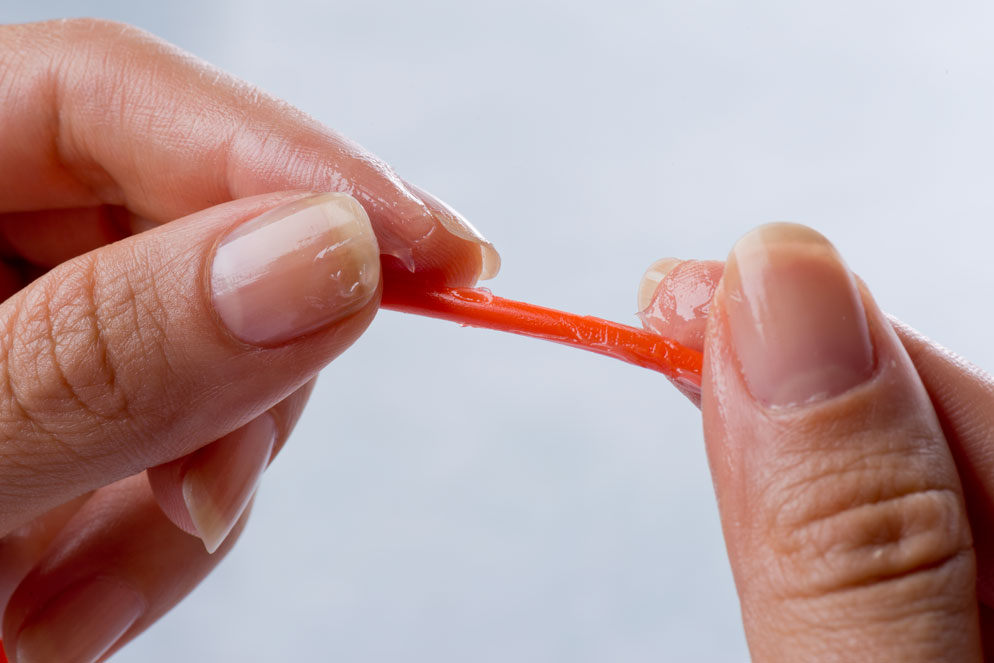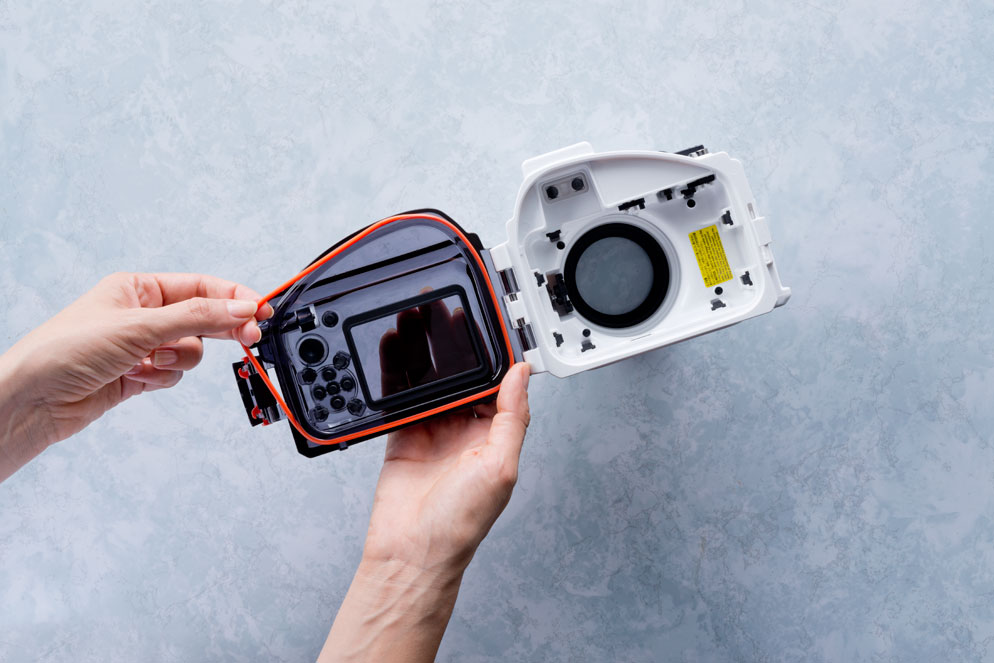Caring for your Nikon 1 Waterproof Housing
Underwater photography is fun and exciting—taking pictures and video of your family frolicking at the beach or pool, or capturing nature under the sea while Snorkeling or SCUBA diving. With the Nikon 1 WP-N1 underwater housing, you can take a Nikon 1 J1 or J2 underwater and with the Nikon 1 WP-N2, you can take your Nikon 1 J3 or S1 digital camera underwater, down to a depth of 130 feet. With the Nikon 1 WP-N3 you can take your Nikon 1 J4 or S2 digital camera underwater, down to a depth of 147 feet. You can also use the WP-N1/WP-N2/WP-N3 to protect your camera from the elements when shooting in the rain or snow. The housing allows you to access all of the buttons on your camera for use while underwater, as well as being able to view the LCD screen on the rear of the camera—all while protecting it.
The Nikon 1 J1 or J2 can be used with the 1 NIKKOR VR 10-30mm f/3.5-5.6 lens within the WP-N1 and the Nikon 1 J3 and S1 can use the 1 NIKKOR VR 10-30mm f/3.5-5.6 lens within the WP-N2. Other lenses can not be used. The WP-N3 underwater housing only accepts the Nikon 1 J4 or S2 camera with the 1 NIKKOR 11-27.5mm f/3.5-5.6 or 1 NIKKOR VR 10-30mm f/3.5-5.6 PD-ZOOM lenses attached.
The proper care and maintenance of a waterproof housing is essential in keeping it watertight.
Before Use
Before each use, you’ll want to do a leak test to ensure that the housing is functioning normally. Check for air bubbles as you operate the controls under the water for about 2 minutes.
Latch the housing closed and slowly submerge it in a shallow basin of water. Operate the controls under the water to check for air bubbles.
Next take the housing out of the water and dry it thoroughly with a soft, dry cloth.
Open it and check for water. If the waterproof housing is completely dry inside, the next step is to test it with the camera inside.
After the initial leak test, dry the exterior of the waterproof housing. Then open the housing and check the interior for leaks. If the interior is dry, you can continue testing with the camera in the housing.
The WP-N1 waterproof housing accepts only the Nikon 1 J1 or J2 camera with the 1 NIKKOR VR 10-30mm f/3.5-5.6 lens attached. The WP-N2 underwater housing accepts only the Nikon 1 J3 or S1 camera with the 1 NIKKOR VR 10-30mm f/3.5-5.6 lens attached. The WP-N3 underwater housing only accepts the Nikon 1 J4 or S2 camera with the 1 NIKKOR 11-27.5mm f/3.5-5.6 or 1 NIKKOR VR 10-30mm f/3.5-5.6 PD-ZOOM lenses attached.
Remove the camera strap.
Make sure your battery is fully charged and insert a blank memory card in the camera, or format the card you do insert into the card slot.
Extend the lens barrel using the retractable lens button; the camera will automatically turn on at this point. Turn the camera off.
Attach the zoom gear sleeve to the lens.
Attach the zoom gear sleeve to the lens, aligning the slot on the sleeve with the retractable lens barrel button. The zoom gear sleeve fits on the lens snugly, so be sure that it is fully on the lens. Correctly attached, the zoom ring will rotate freely.
With the zoom gear sleeve on the camera lens, attach the inner-reflection prevention ring to the front of the lens to keep the lettering on the front of the lens from appearing in photos.
Attach the inner-reflection prevention ring to the front of the lens to keep the lettering on the front of the lens from appearing in photos. The ring is threaded and should be fully screwed onto the lens.
Follow the camera guides in the housing to center the camera correctly.
Insert one packet of silica gel desiccant between the bottom of the camera and the housing. This will prevent condensation from forming inside the housing. Make sure you slide it all the way to the front of the WP-N1/WP-N2/WP-N3 so it doesn’t interfere with the housing's ability to close properly.
Double check that the O-ring is in place and free of dust, sand or other foreign objects. If you’re using an optional underwater flash unit, make sure that the built-in flash is raised.
Close the housing securely, latching it shut.
Insert one packet of silica gel desiccant between the bottom of the camera and the housing. Make sure you slide it all the way to the front so it doesn’t interfere with the housing closing.
With the camera in the housing, perform a final check for leaks, by slowly submerging it into a shallow container of water, checking for air bubbles.
Then take the housing out of the water and dry it thoroughly with a soft, dry cloth. Open the housing and check for water. It should be dry inside.
If leaks are detected, immediately dry the camera and housing thoroughly, making sure that the O-ring is intact and the housing properly sealed. If the cause of the leak can’t be determined, take the housing to a Nikon-authorized service representative.
You are now ready to take photos and videos!
With the camera in the housing, check for leaks by slowly submerging the housing into a basin of water. Check for air bubbles as you operate the controls.
After use
After each use, clean the housing using the following method:
With the camera still in the housing, perform a preliminary rinse, washing it in a basin of fresh water before you take the camera out.
With the camera still in the housing, rinse it in a basin of fresh water.
Dry the exterior thoroughly with a soft, dry cloth.
Then you can open the WP-N1/WP-N2/WP-N3 and remove the Nikon 1 camera.
Remove the camera and wipe down the interior of the housing with a soft, dry cloth. Use a blower to remove foreign objects from within the housing.
Do not wash the interior of the housing with water, soap or chemicals of any kind.
Dry the exterior of the waterproof housing thoroughly with a soft, dry cloth. Once dry, you can open it and remove the Nikon 1 camera.
With the camera removed, reseal the housing and place it in a basin of fresh water.
Operate the controls a few times to remove any salt that may have accumulated during use.
Reseal the latch and submerge the empty waterproof housing in water, soaking it to fully clean the unit.
Let the waterproof housing soak in a basin of fresh water for 2-3 hours.
Remove it from the basin.
Then, wipe the housing thoroughly with a clean, soft, dry cloth and leave it out to fully dry in a shady, well-ventilated area.
Securely close the empty housing and soak it in water for two to three hours to thouroughly clean any salt or seawater from its surface.
Maintenance
Care for the O-ring is important, as this is what gives the WP-N1, WP-N2 and WP-N3 housings its watertight seal. Before each use of the housing, you’ll want to check the condition of the O-ring. To do so, follow these instructions:
Remove the O-ring using the O-ring remover.
Clean the old silicon grease using a soft cloth, making sure that no fibers or threads are left behind.
Visually inspect the O-ring for cracks by gently bending it.
Inspect the O-ring guide (the channel that the O-ring sits in), for foreign objects. Use a blower or cotton swab to remove anything you see.
Remove the O-ring using the O-ring remover.
It is important to perform the required regular maintenance on the WP-N1/WP-N2/WP-N3 and its parts, particularly the O-ring, as it plays a large part in keeping the underwater integrity of the housing.
Grease the O-ring using only the silicon grease that is designed for the WP-N1, WP-N2 or WP-N3, whichever you own.
Place a drop of silicon grease on your index finger and spread the grease on the O-ring by sliding it between your thumb and index finger, evenly covering the O-ring. Do not use cloth or paper, as fibers could adhere to the O-ring and prevent the housing from sealing properly.
Do not use the lubricant that is used for COOLPIX or NIKONOS underwater cameras' O-rings!
Grease the O-ring using the silicon grease that is designed for the WP-N1/WP-N2. Place a drop of silicon grease on your index finger and spread the grease on the O-ring by sliding it between your thumb and index finger as shown, evenly covering the O-ring.
Replace the O-ring, making sure it runs evenly at the same level all the way around the guide. The O-ring should not protrude from the guide, nor should it be twisted or stretched out of shape.
Replace the O-ring, making sure it runs evenly at the same level all the way around the guide. The O-ring should not protrude from the guide, nor should it be twisted or stretched out of shape.
TIPS: $
-
Use a high capacity memory card and fully charged battery to get the most use out of your camera in its waterproof housing underwater. It is no fun to begin seeing great subjects to photograph and finding the battery is dead or the card full.
-
After placing the camera in the housing, take a test shot. This will help ensure you haven’t put the camera into the housing with the lens cap on, without a media card or the battery.
-
Before getting into the water, always double check that the latch is securely shut.
-
When traveling, make sure you take along extra desiccant packets, silicon grease, an extra O-ring and the O-ring remover.
-
Replace the O-ring at least once a year, as preventative maintenance. Use only the Nikon O-ring specifically designed for your model of waterproof housing.
-
Traveling with the WP-N1/WP-N2/WP-N3 by air: for the avid Snorkeler or SCUBA diver traveling by airplane, you’ll want to pack the waterproof housing in your carry on baggage. If you do pack it in your checked luggage, either leave the case open or remove the O-ring, and place the O-ring in a baggie, (to keep it clean) so you don’t run into issues where the changes in air pressure cause damage.

